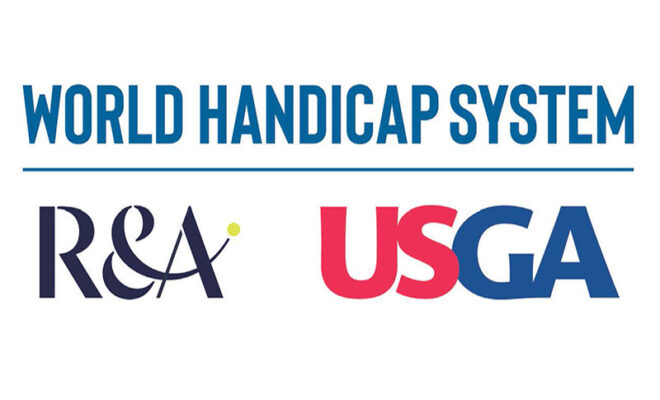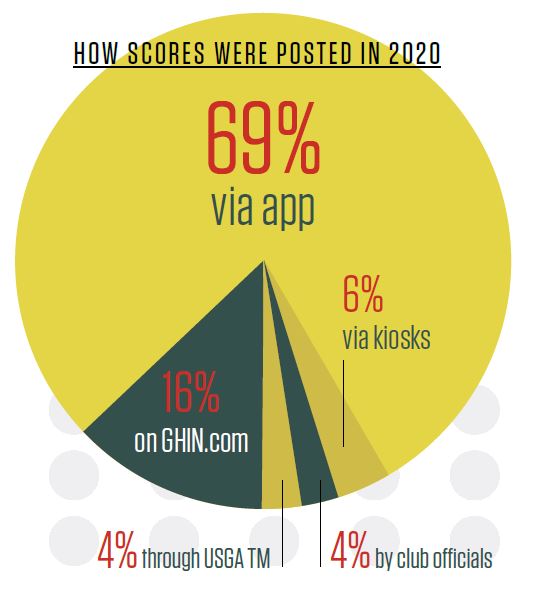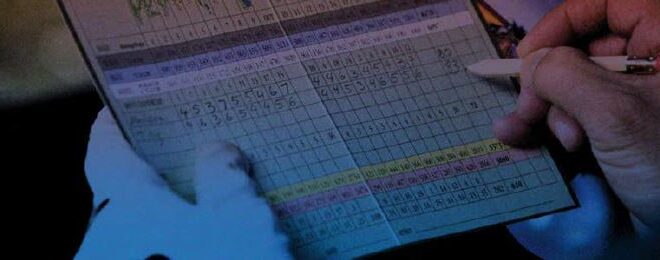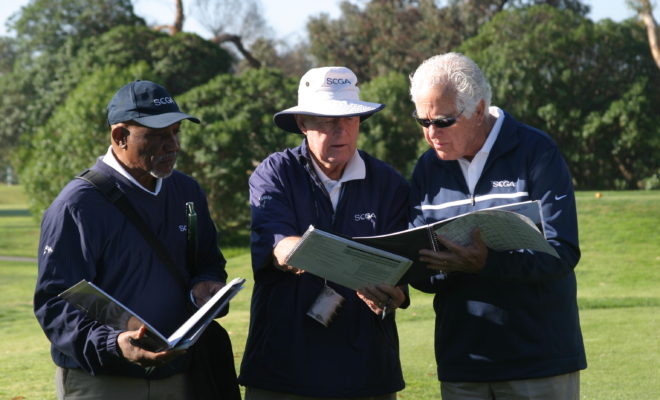WHS: A first-year review

As 2020 was the first year for the World Handicap System™, we thought we would look back at some statistical information to see how things have gone. First off, SCGA members continue to be active and resilient about posting their scores for handicap purposes. Members averaged a little under 25 scores posted, down from the usual 30+, but with course access being limited at various times, this is impressive.
For several reasons, score posting via the GHIN Mobile App continues to increase. Nationally, some 66 percent of scores were posted via the app, while in Southern California this was slightly higher at 69 percent. Scores posted at course computers, known as kiosks, decreased from more than 30 percent in 2019 to approximately 6 percent in 2020. With physical facility and clubhouse access limited and/or closed at certain times, it makes sense that there was a decrease in posting at kiosks. Scores posted on GHIN.com remained around 16 percent both nationally and in Southern California.
There were some new safeguards built into the World Handicap System, and the USGA and SCGA have been monitoring these to make sure that they’re impacting the System and golfers as anticipated.
First off, one of the best new features is a playing conditions calculation (PCC) that looks at scores posted on a particular day to determine whether a composite of scores reflects how players are expected to play in relation to the ratings that day. If that composite strays too far from what is expected, an automated adjustment is applied by the system to the Score Differential™.
There have been some 3,200 occurrences (a specific course with at least eight scores posted that day) in which the PCC has been applied. The adjustments can range from -1 to +3
(a plus value means the course played harder than expected). Some four percent of eligible course days resulted in adjustments, with slightly more than two percent being -1, about 1.4 percent being +1, 0.4 percent +2 and a very small amount being +3. It is great to have this check and balance in place to better reflect how a course plays on a particular day, considering course setup and weather anomalies.
One note related to the PCC, as well as to the frequency of a Handicap Index® being updated: 58 percent of scores in 2020 were posted on the day the round was played. Remember that the Handicap Index is updated each time a score is posted, and for a score to be considered in the determination of whether a PCC applies it needs to be posted on the day of play. These
are two key reasons that posting on the day the round is played is strongly recommended.
Another new feature is a limit on how far upward a Handicap Index may rise in comparison to the Low Handicap Index™ of the last 12 months. This uses demonstrated ability as a baseline, and while we all suffer from bouts of poor form, it is rare for those struggles to remain long term. These upward limits are identified as “caps”, and there are two levels: soft and hard caps. The soft cap suppresses upward movement above 3.0 more than the Low Handicap Index, and the hard cap limits the maximum increase to 5.0 above the Low Handicap Index. Nationally, the number of caps has been just under 300,000 for 2.4 million golfers (golfers can be capped more than once), and in Southern California there have been approximately 10,000 caps for more than 160,000 golfers.

The exceptional-score reduction (ESR) is in place when someone scores at least 7.0 better than their Handicap Index. When this happens, in addition to the normal math (eight best of 20 score differentials for a full scoring record) calculation, the Handicap Index is au-tomatically reduced (by one if 7.0 to 9.9 better and by two if 10.0 or more). Na-tionally, there were nearly 241,000 ESR adjustments impacting approximately 209,000 golfers. In Southern California, there were approximately 20,900 ad-justments impacting 15,650 golfers.
Last, but not least, the average Handicap Index continues to decrease. The national average is now 13.7 for men and 27.3 for women.
The World Handicap Research Team and Handicap Operations Committee will analyze this type of data to see if fine-tuning is appropriate.










